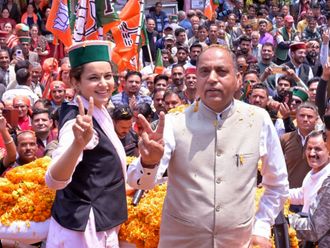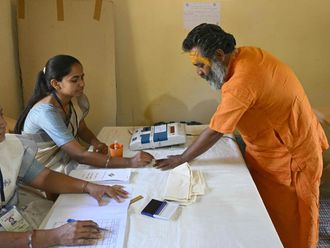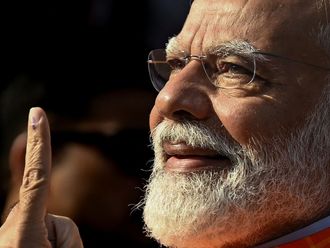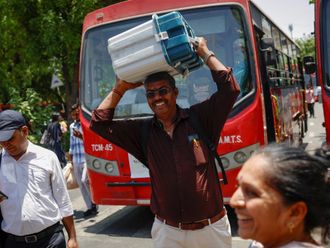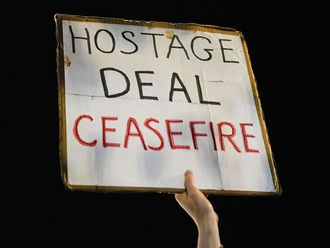Hyderabad: With early elections to Telangana Legislative Assembly looking imminent and the ruling Telangana Rashtra Samiti (TRS) marshaling all its forces and resources, the opposition parties have also started weighing their options and analysing their strengths and weaknesses.
Here is a look where the TRS and its rivals stand and what are the challenges and opportunities for them.
TRS:
With a strong and charismatic leader in K Chandrasekhar Rao and a well oiled organisational machinery the ruling party was starting in the race clearly ahead of the challenge.
Having played a leading role in securing separate.
Telangana state KCR had led his party to easy victory in 2014 with 63 seats and 34.3 per cent popular votes.
He again plans to flaunt the emotional and regional card and portray opponents as “slaves of Delhi”.
Unlike the opposition TRS will offer a clear choice in KCR for the CM’s post for the second term. He will be seeking a fresh mandate on the basis of his performance, host of developmental and welfare programmes, bringing the state out of serious power crisis, making 24 hour power supply, accelerating economic growth and securing top rankings in Ease of Doing Business, creating a business and industry friendly atmosphere, taking several farmer friendly initiatives, sops for all the weaker sections, ensuring the state remained peaceful over the last four years by keeping the Maoists and communal trouble makers in check. However the opposition will target him on the issues like family rule, alleged corruption and keeping the tenant farmer and farm labourers out of the benefits announced for the land owning farmers. KCR’s failure in fulfilling the promise of increasing reservation quota for Muslims and scheduled tribes to 12 per cent will also be a target of the opposition.
Congress:
For the main opposition Congress party the second elections since the formation of Telangana is a do or die battle. Though in 2014 it was reduced to paltry 21 seats in 119-member assembly, it still polled a respectable 25 per cent votes. However absence of a strong leader to take on KCR remains its Achilles heel.
Congress strategy was to woo back its traditional support base among the backward classes, dalits, tribals and minorities by offering sops. Among the upper castes the party continues to enjoy a good hold among the Reddys.
Congress campaign will largely depend on the star appeal of Nehru Gandhi family for which many in the state still have a soft corner. People acknowledge that without UPA chairperson Sonia “Amma” Gandhi’s intervention separate Telangana state would not have become a reality.
However realising that it was still not in a position to take on the powerful TRS on its own Congress was seriously working on the possibility of joining hands with the second major opposition party Telugu Desam.
Telugu Desam Party:
N Chandrababu Naidu’s party had polled 14.7 per cent of votes and won 15 seats last time. According to the reports Congress president Rahul Gandhi and TDP national president and Andhra Pradesh Chief Minister Naidu have reached a broader understanding on how to face the TRS.
KCR’s astute moves of wooing most of the important leaders and all but 3 MLAs has left the TDP a pale shadow of itself. While it still enjoys pockets of influence especially among the Andhra settlers, it remains to be seen to what extent it will be able to mobilise them. TDP’s label of pro-Andhra party will be a weak-point which TRS will fully exploit.
Bharatiya Janata Party:
Despite making frequent claims that it will form the next government in the state, BJP appears to have resigned itself to play a marginal role. Of late the party’s rank and file were left confused by contradictory signals from the central leadership. While the party’s national president Amit Shah assured the state party that he will personally take the command in Telangana and lead the party to victory, Prime Minister Narendra Modi’s praise for Telangana government and easy access to KCR has put the state BJP in a dilemma. The general feeling was that KCR’s move of advancing the polls had the blessings of Narendra Modi-Amit Shah duo. Observers say Modi’s calculation was that if Congress looses in Telangana it challenge to him at the national level will weaken.
The BJP, which won five seats (all in Hyderabad city) and polled seven per cent votes, remains an urban party with little or no organisational structure in rural areas. The party also suffers from lack of any charismatic leader and any emotional issue to cause polarisation. Though KCR promising 12 per cent reservation to Muslims and its proximity to the All India Majlis-e-Ittehadul Muslimeen (AIMIM) were identified as possible sticks to beat KCR with, even that plan appears to be in doldrums because of Modi-KCR friendship.
AIMIM factor:
The AIMIM, led by Asaduddin Owaisi, remains a “Hyderabad party” where it won seven assembly seats and polled 3.8 per cent in 2014. On the basis of its accessibility to the masses, good work on the ground and its strong clout among the Muslims, party will not find retaining all its seats difficult. However the party was eyeing three more seats in the city, which were presently with the TRS and the BJP.
The plus point for the MIM was its good rapport and warm friendship with the TRS supremo KCR. But it also has a potential to become a problem if TRS becomes too cosy with the BJP.
Others:
The electoral scene in Telangana this time will be crowded with the presence of several other smaller parties. They will include Communist Party of India, Communist Party of India-Marxist, YSR Congress of YS Jaganmohan Reddy, Jana Sena of film star Pawan Kalyan, Telangana Jana Samiti of Prof Kodandaram and other sundry players who could upset the calculations of major parties by dividing votes.


